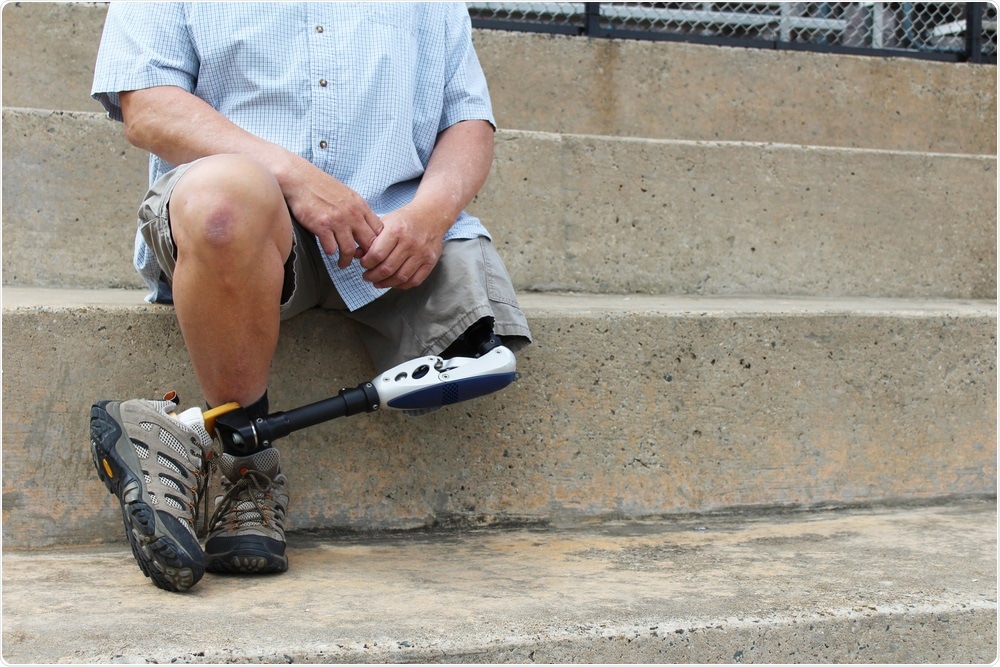What is body integrity dysphoria (BID)?
Formerly, we named it “Body integrity identity disorder” (BIID), but now, as the condition is on the verge to turn into an “official illness”, its label is BID, standing for “body integrity dysphoria”.
It is described as someone suffering from having a fully functional, four-limbed body. People with BID feel disturbingly uncomfortable in their bodies.
Analogous to somebody with GD, gender dysphoria, who wishes for a change of gender, somebody with BID would like to exchange their normal body with an incomplete one, these people aim for an amputation or paralysis or functional disturbances like deafness or blindness.
How do individuals develop BID?
We must assume that there is some very early development of the disorder. Most persons can track their dysphoria back to early childhood. Some claim there was a certain trigger event, e.g. being fascinated by watching an amputee.
It is even possible that there is some innate component, which allows normal physical development of a limb, but hinders the development of a normal cortical representation.
Why is it important that the sensorimotor limb area is fully connected to other regions of the brain?
Healthy brain areas always work in concert with one another. A decreased functional connectivity indicates isolated processing; the execution of the task for which a region is specialized runs in a disconnected way.
In the case of the sensorimotor limb area, this means that a person is still perfectly able to feel a limb and to move it. However, sensations and movements will not add up to a meaningful message: hey, that is MY limb.
Indeed, the strength of the functional connectivity of the sensorimotor limb area mediates this feeling that our limbs belong to us. We found that the sensorimotor area of the to-be removed leg in BID was less connected to other parts of the brain.
How did you carry out your research into the brain mechanisms associated with BID? What did your findings show?
We recruited 16 men, all with the desire to have their left leg amputated. This is a large sample, considering the rarity of the disorder! And, in contrast to previous research, the desire shared by this sample is extremely homogenous: just the left leg (as a matter of fact, it is mostly legs that are affected and more left than right legs, which speaks for the role of the right hemisphere for BID).
We then scanned these persons alongside 16 carefully selected control men of comparable age (age ranged between 28 and 67 years). The scanning method used was structural magnetic resonance tomography.
Half the participants were scanned in Zurich, half in Milan; this was a Swiss-Italian cooperation.
The findings implicate several areas that are known to contribute to our corporeal awareness, i.e. our experience of ourselves as having a body that is both familiar and unquestionably ours.
We found one of the higher-order areas of body representation, the superior part of the right hemisphere parietal lobe, to show atrophy, a shrinking, compared to the same area in the controls.
In addition, this area was also not well connected to other areas in the brain, again relative to the functional connectivity apparent in the control men. Of particular interest is that the more pronounced the atrophy in this region, the more an individual was inclined to simulate being an amputee, e.g. by using crutches or a wheelchair.
This type of simulation or pretending behavior provides transient relief to persons with BID and our results suggest that more evident structural damage leads to more frequent pretending.
There is a caveat, however: our results are purely correlational; that means that years if not decades of pretending to be a leg amputee by binding one of his legs into an unnatural position, could also have caused a structural shrinking of body processing areas.

Image Credit: Natalie Schorr/Shutterstock.com
Gray matter plays a role in body image as well as within BID. Do you believe that gray matter could also have other essential roles within brain function that are yet to be discovered?
In our study, we observed that the interplay between both the characteristics of the gray matter and the functional connectivity of certain regions might be responsible for the feeling of being at home in one’s body, and the acceptance of all the limbs as integral parts of the body.
Gray matter alone is crucial, but obviously not sufficient enough to make things work. In the case of BID, we assume that social matters play a role almost equally important to that of gray matter; whether one accepts a body as one’s own also depends on how others see it.
The identification with “social body image” is important and is reflected in the fact that BID is primarily an illness of our Western society, similar to anorexia, which is an entirely different dysphoria concerning bodily experience.
How could your research help individuals that are suffering from BID? Do you believe brain stimulation techniques could help individuals that are suffering from this condition?
To develop such techniques was one of the major goals of our research. However, we are still far from being able to offer something reliable. We have identified the areas and circuits involved in the disorder, and this is the first step.
Perhaps techniques like transcranial magnetic stimulation could be tried out over these regions. Other, more invasive, techniques such as deep brain stimulation are the target of some research by Dutch scientists.
What are the next steps in your research into BID?
“Body Integrity Dysphoria” will be listed as a mental disorder in ICD-11, effective as of January 2022. I suspect that once accepted as a disorder, more people will have a “coming out” and identify themselves as sufferers.
More disturbing is the broadening of the meaning of “integrity”. “Body integrity” not only refers to the corporeal features of shape and physical form but also comprises bodily functions.
Some persons claim the need to become deaf or blind, in such cases, we will certainly not be able to pinpoint the locus of brain abnormalities to circumscribed regions. Research into BID will nevertheless have to include also the rarer forms of the condition.
Also, the term “dysphoria” brings some troubles with it. There are persons, who feel attracted erotically to amputees, but do not suffer from owning a four-limbed body.
What are the relationships between body ownership, satisfaction by one’s own body image, and the sexual orientation concerning body integrity? The field will broaden, no doubt.
Perhaps my Ph.D. student Gianluca, the first author of the paper, will investigate persons with BID alongside persons with dissatisfaction for their gender or body weight (i.e. anorexia), the latter being a particularly well-established and devastating type of body dysphoria.
Where can readers find more information?
Click here to read their publications: https://www.neuroscience.uzh.ch/en/research/cognitive_neuroscience.html#brugger
About Dr. des. Gianluca Saetta
Gianluca Saetta is a researcher in clinical and cognitive neuroscience at the University of Zurich.
Combining methods from neuropsychology, behavioral neurology, and psychiatry, his actual research interests are the multisensory and plastic mechanisms leading to the construction of unitary and coherent body representation in both healthy participants and clinical populations.
A particular focus is on individuals with body integrity dysphoria, traumatic amputees with phantom sensations, and brain-damaged patients with acquired complex disorders of the bodily self.
About Professor Peter Brugger
Peter Brugger, a biologist by training, is a neuropsychologist who works both clinically and in research.
His research interests include the neuropsychology of space and time, the interconnections between body and self, and various topics at the intersection of cognitive neurology and psychiatry, such as the formation and maintenance of “paranormal” beliefs and the conceptual similarities between creativity and madness.